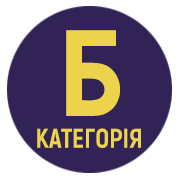THE PROBLEM OF OPTIMIZING THE TECHNIQUE OF PERFORMING EXERCISES IN STRENGTH FITNESS TAKING INTO ACCOUNT THE PHYSIOLOGICAL PROCESSES OF ADAPTATION OF PERSONS OF DIFFERENT AGE GROUPS TO LOADS
DOI:
https://doi.org/10.32782/ped-uzhnu/2024-3-2Keywords:
strength fitness, technique, corrections, age groups, physiological processes, adaptation.Abstract
The purpose of the research. Develop a system for improving the technique of performing exercises in strength fitness, taking into account age-related physiological processes of adaptation of the neuromuscular system to loads. Research methods. Using an integral complex of modern methods of systematization, generalization and processing of information, a comparative analysis of the results of scientific works on the subject of research was carried out. We conducted a survey of 350 strength fitness and bodybuilding trainers in 160 fitness centers of Ukraine to determine the main problems in the process of practical implementation of the "basic" technique of performing strength exercises by representatives of different age groups. The results. The results of the survey show that the complexity of the problems associated with justifying the need to use the "basic" technique during strength training during exercise is related to their particularity. Thus, in the process of using exercises with free weights, the uneven development of the involved muscle groups to stabilize the body position and simultaneously resist external resistance increases the risk of injury and premature depletion of energy resources. At the same time, long-term performance of isolated exercises on simulators will lead to an insufficient level of development of stabilizer muscle groups, which are extremely necessary during basic exercises. Based on the analysis of the results of modern scientific works, it was established that the trajectory, amplitude of movement and the duration of their phases against the background of changes in body position are among the main factors that influence the correction of the technique of performing exercises in strength fitness. The main characteristics of the technique of performing exercises for people of different age groups in the process of strength fitness are developed, taking into account their physiological features of adaptation of the neuromuscular system to loads. Conclusions. The system of correction of the technique of performing exercises in strength fitness, developed by us, allows in the shortest possible time to determine the main ways of its improvement, taking into account the physiological processes of adaptation of persons of different age groups to loads.
References
Balachandran A., Wang Y, Szabo F, Watts-Battey C, Schoenfeld B, Zenko Z, Quiles N. Comparison of traditional vs. lighter load strength training on fat-free mass, strength, power and affective responses in middle and olderaged adults: A pilot randomized trial. Exp Gerontol. 2023; 178:112219. https://doi.org/ 10.1016/j.exger.2023.112219.
Chen C., Nakagawa S. Physical activity for cognitive health promotion: An overview of the underlying neurobiological mechanisms. Ageing Res. Rev. 2023; 86:101868. https://doi.org/10.1016/j.arr.2023.101868.
Chernozub A., Titova H., Dubachinskiy O., Bodnar A., Abramov K., Minenko A., Chaban I. Integral method of quantitative estimation of load capacity in power fitness depending on the conditions of muscular activity and level of training. Journal of Physical Education and Sport . 2018; 18(1):217-221.
Chernozub A., Marionda I., Potop V., Syvokhop E., Khoma T., Spivak A., Tvelina A., Voichun H., Kovaleva N. The character of adaptation changes in bodybuilders in conditions of sequential use of isolation and basic exercises. Journal of Physical Education and Sport. 2022; 22 (8):1962-1967
Chernozub A., Manolachi V., Tsos A., Potop V., Korobeynikov G., Manolachi V., Sherstiuk L., Zhao J., Mihaila I. Adaptive changes in bodybuilders in conditions of different energy supply modes and intensity of training load regimes using machine and free weight exercises. PeerJ. 2023; 11:e14878 https://doi.org/10.7717/peerj.14878
Chernozub A, Hlukhov I, Drobot K, Synytsia A, Rymyk R, Pyatnychuk H, Leshchak O, Malanyuk L, Potop V. Correlation between load volume and indicators of adaptive body changes in untrained young men participating in fitness. Journal of Physical Education and Sport. 2024; 24(2):321-328. https://doi.org/0.7752/jpes.2024.02038
Dieckelmann M, González-González AI, Banzer W, Berghold A, Jeitler K, Pantel J, Pregartner G, Schall A, Tesky VA, Siebenhofer A. Effectiveness of exercise interventions to improve long-term outcomes in people living with mild cognitive impairment: A systematic review and meta-analysis. Sci. Rep. 2023; 13:18074. doi: 10.1038/s41598-023-44771-7
He K, Sun Y, Xiao S, Zhang X, Du Z, Zhang Y. Effects of High-Load Bench Press Training with Different Blood Flow Restriction Pressurization Strategies on the Degree of Muscle Activation in the Upper Limbs of Bodybuilders. Sensors (Basel). 2024; 24(2):605.doi: 10.3390/s24020605.
Latino F, Tafuri F. Physical Activity and Cognitive Functioning. Medicina (Kaunas). 2024; 60(2):216. https://doi.org/10.3390/medicina60020216.
Manolachi V, Chernozub A, Potop V, Marionda I, Titova H, Sherstiuk L, Shtefiuk I. The effectiveness of using power fitness training loads to increase adaptive reserves of female athletes in hand-to-hand combat. Pedagogy of Physical Culture and Sports. 2022; 26(5):319-326.
Mitsuya H, Nakazato K, Hakkaku T, Okada T. Hip flexion angle affects longitudinal muscle activity of the rectus femoris in leg extension exercise. Eur J Appl Physiol. 2023. https://doi.org/10.1007/s00421-023-05156-w.
Noteboom L, Nijs A, Beek P, Helm F, Hoozemans M. A Muscle Load Feedback Application for Strength Training: A Proof-of-Concept Study. Sports (Basel). 2023; 11(9):170. https://doi.org/10.3390/sports11090170.
Potop V, Manolachi V, Chernozub A, Kozin V, Syvokhop E, Spivak A, Sharodi V, Jie Z. Changes in circumference sizes of bodybuilders using machine and free weight exercises in combination with different load regimes. Health, Sport, Rehabilitation. 2023; 9(2): 74-85. https://doi.org/10.34142/HSR.2023.09.02.06.
Rukstela A, Lafontant K, Helms E, Escalante G, Phillips K, Campbell B. Bodybuilding Coaching Strategies Meet Evidence-Based Recommendations: A Qualitative Approach. J Funct Morphol Kinesiol. 2023; 8(2):84. doi: 10.3390/jfmk8020084.
Schoenfeld B, Ogborn D, Piñero A, Burke R, Coleman M, Rolnick N. Fiber-Type-Specific Hypertrophy with the Use of Low-Load Blood Flow Restriction Resistance Training: A Systematic Review. J Funct Morphol Kinesiol. 2023 8(2):51. https://doi.org/10.3390/jfmk8020051.
Shirai T, Uemichi K, Takemasa T. Effects of the order of endurance and high-intensity interval exercise in combined training on mouse skeletal muscle metabolism. Am J Physiol Regul Integr Comp Physiol. 2023; 325(5):593-603. https://doi.org/ 10.1152/ajpregu.00077.2023.
Yamasaki T. Preventive Strategies for Cognitive Decline and Dementia: Benefits of Aerobic Physical Activity, Especially Open-Skill Exercise. Brain Sci. 2023; 13:521. doi: 10.3390/rainsci13030521.







